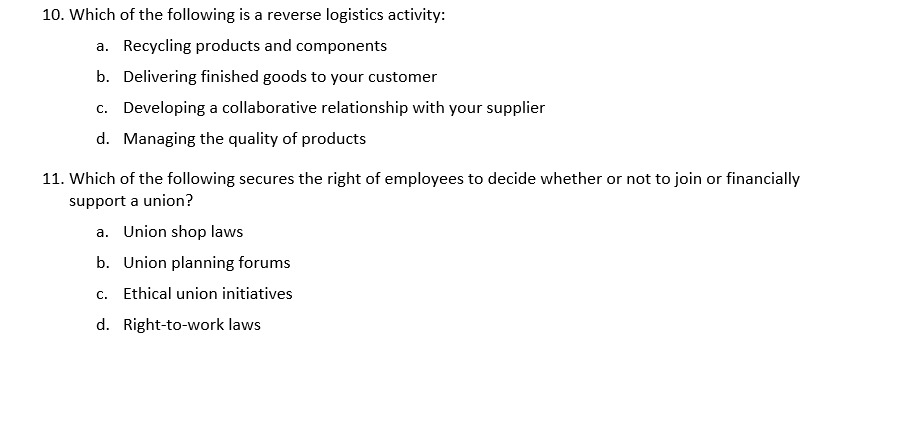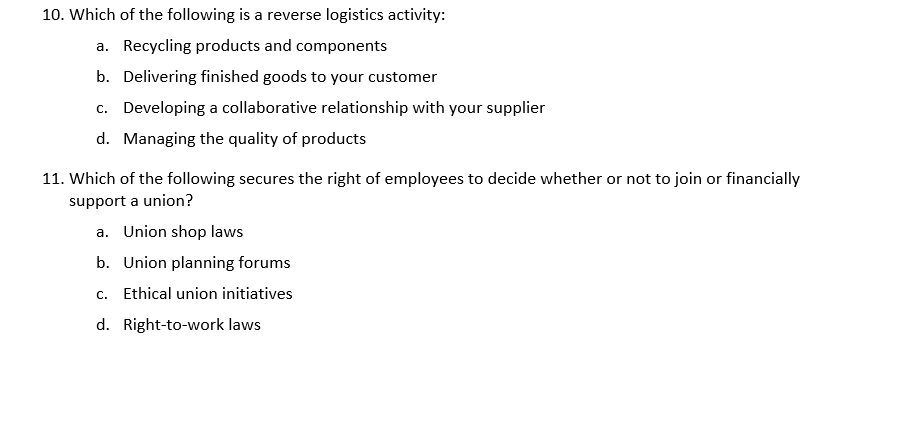Reverse logistics refers to the process of moving goods from their final destination back to the manufacturer or retailer for the purpose of returns, repairs, recycling, or disposal. Unlike traditional logistics, which involves moving products from manufacturers to consumers, reverse logistics focuses on the movement of goods in the opposite direction. Let’s explore some common activities associated with reverse logistics.

Common Reverse Logistics Activities
1. Product Returns
- True: Product returns are a classic example of reverse logistics. When customers return products, whether due to defects, dissatisfaction, or other reasons, these goods are sent back to the manufacturer or retailer for inspection, restocking, or refurbishment. Managing product returns efficiently is a key aspect of reverse logistics.
2. Repair and Refurbishment
- True: Repair and refurbishment are important reverse logistics activities. Products that are returned or used may need to be repaired or refurbished to restore them to a functional condition. These items are sent back to repair centers, where they are fixed and resold, often at a lower price.
3. Recycling and Disposal
- True: Recycling and disposal activities are also part of reverse logistics. When products are no longer useful, they are returned for recycling or proper disposal. This is common for electronic products, batteries, or items that cannot be resold but can be recycled to recover valuable materials.
4. Excess Inventory Management
- True: Excess inventory management is another reverse logistics activity. Items that are overstocked or obsolete can be returned from retailers or distribution centers to the manufacturer or supplier for redistribution, recycling, or liquidation.
5. Warranty Returns
- True: Warranty returns involve the return of products that fail during the warranty period. These products are typically sent back to the manufacturer for inspection, repair, or replacement, which falls under the category of reverse logistics.
Conclusion
Reverse logistics activities play a vital role in managing the lifecycle of products after they reach consumers. These activities help companies recover value from returned or unused goods, contribute to sustainability efforts, and ensure efficient supply chain management.








